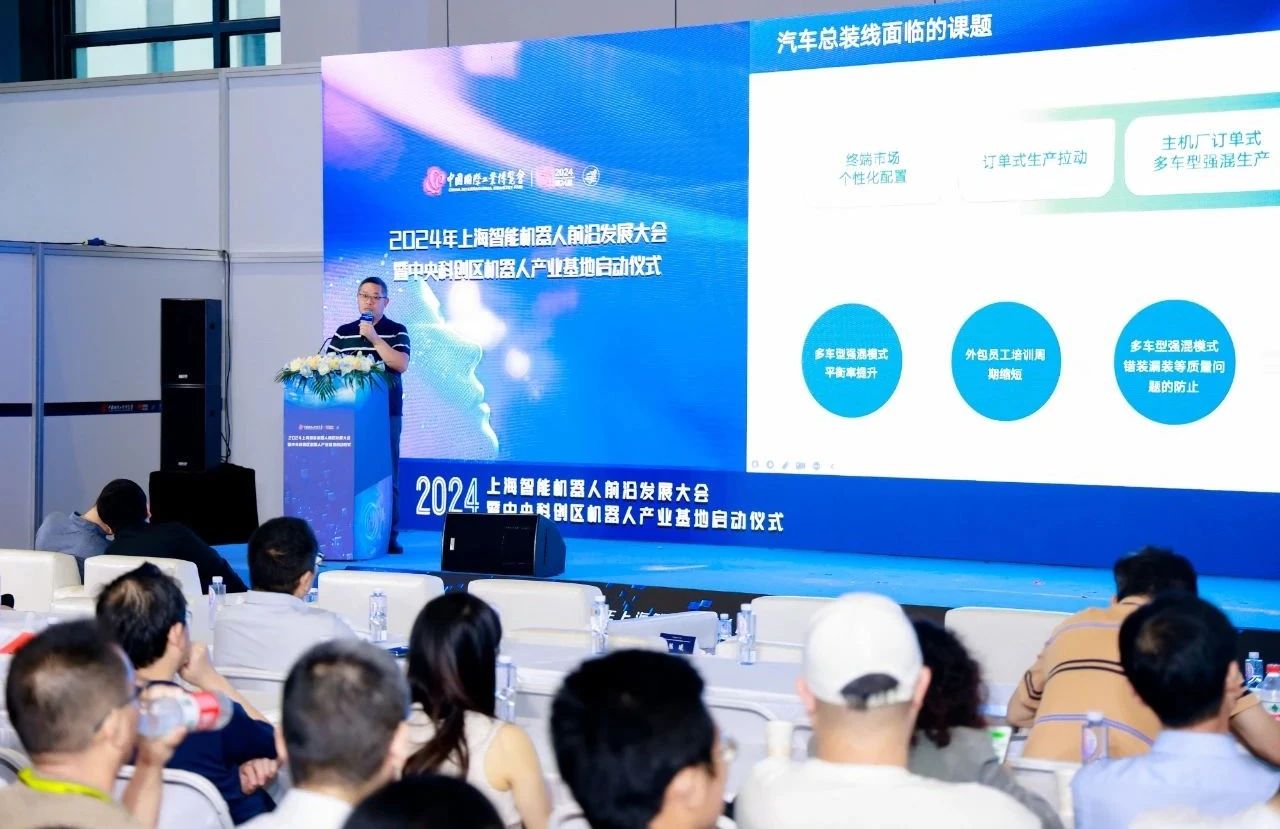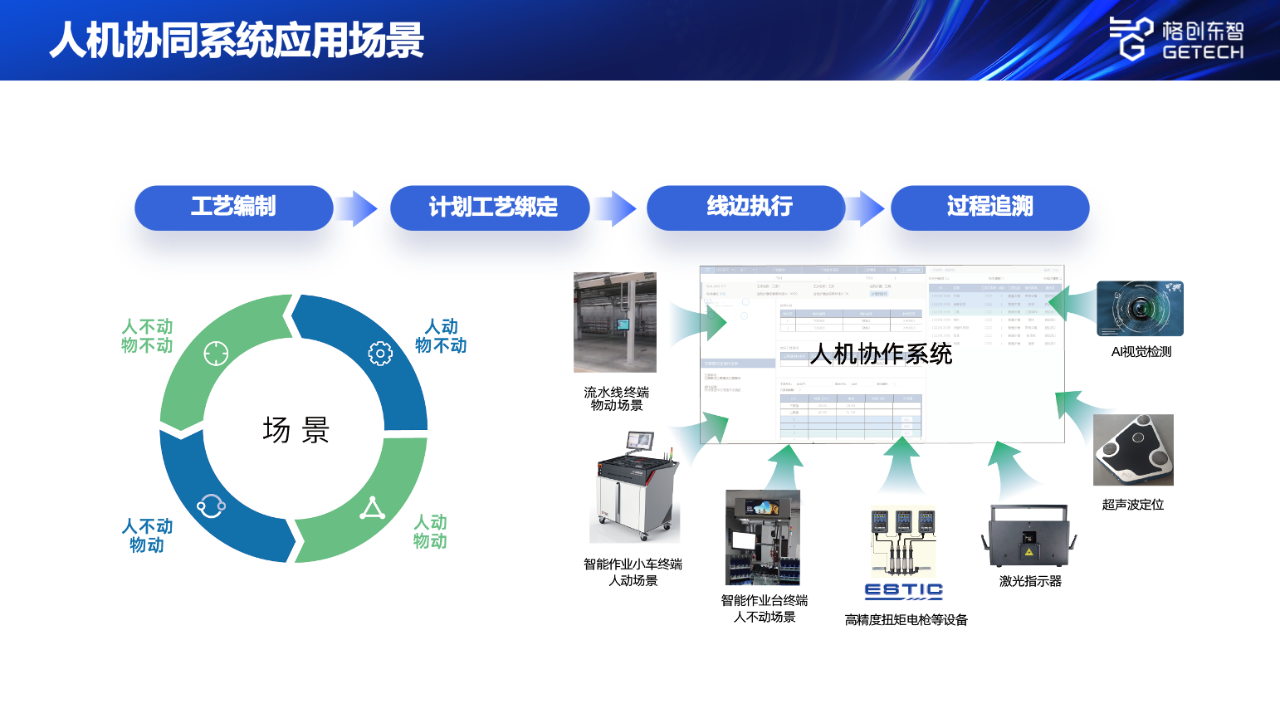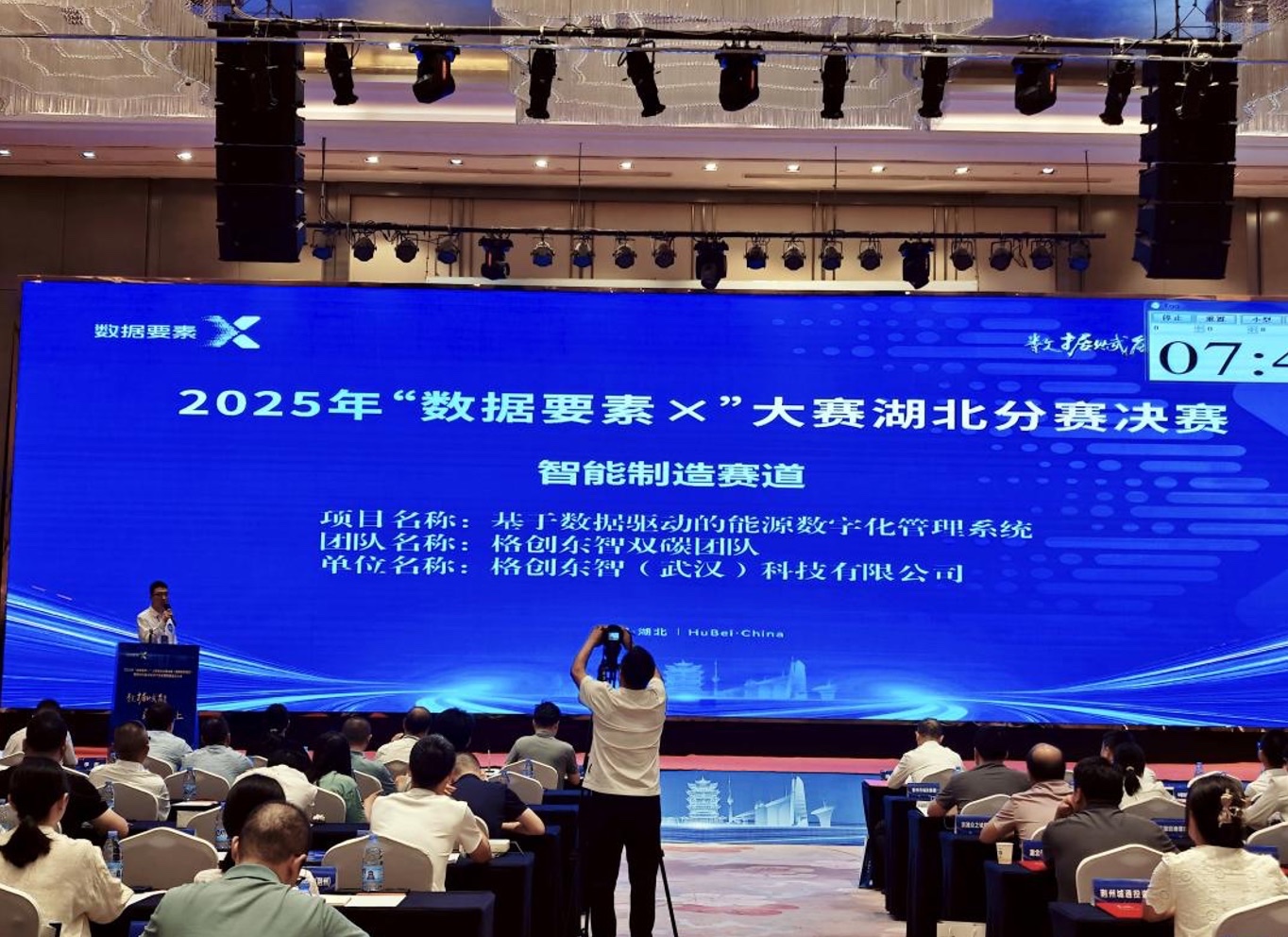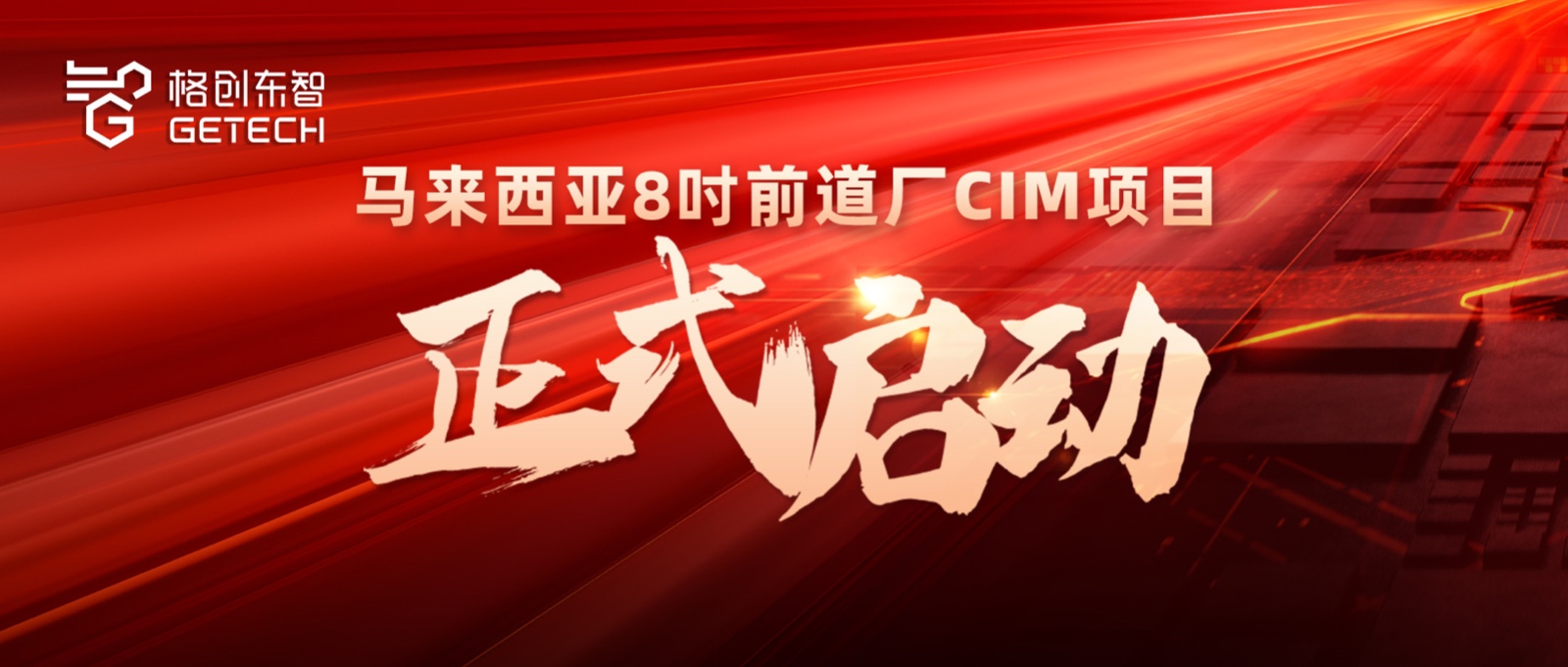GETECH's CIIE Time: Human-Machine Collaboration System Shines, Unlocking Efficiency Secrets in Equipment Manufacturing
In the equipment industry, the operational management of final assembly lines—including informatization, personnel control, and material coordination—has always been key to creating a highly integrated, intelligently collaborative, and flexible production environment. On the afternoon of September 26, Xu Limin, Chief Smart Manufacturing Expert at GETECH, delivered a keynote speech titled "Human-Machine Collaboration System Empowers Smart Manufacturing" during the CIIE event, offering optimal solutions for smart manufacturing in the equipment industry.

"Bottlenecks in final assembly scenarios often stem from the physical limitations and efficiency constraints of frontline personnel in flexible workstations, making it difficult to meet the demands of multi-batch, small-lot, and rapid-response production that requires fast resource scheduling and high precision across multiple stations. To address this, we have focused on exploring how to build a human-machine collaboration system that further integrates flexible workstation guidelines with industrial software and hardware to overcome customers' cost challenges," said Xu Limin. "GETECH's self-developed human-machine collaboration system leverages the strengths of both equipment systems and frontline engineers, bridging the 'last mile' between them. The system records process parameters and enables reverse control for optimization, while engineers can complete standardized tasks based on operational prompts, creating a seamless, high-balance smart manufacturing scenario where production control, material distribution, and frontline operational awareness are perfectly aligned."

In terms of specific production execution, Xu further explained that after implementing GETECH's human-machine collaboration system, customers can edit structured process data via a zero-code approach, overcoming the collaborative limitations of traditional work instructions. Once system commands are issued, both management and on-site personnel can automatically synchronize operational indicators and equipment execution parameters, greatly enhancing consistency between ends and ensuring zero errors and zero downtime in the production process. Additionally, the system supports parallel operations across multiple stations and personnel, monitors line-side material retrieval and material code data, and provides error-proofing prompts, equipping frontline engineers with a 'smart memory card' to achieve intelligent coordination between human and material flows. In human-machine flow coordination, taking torque tools as an example, the system includes a built-in torque management module that supports mainstream electric guns and tightening tools such as Esdick, Atlas, and Matco, and integrates hardware like laser indicators and ultrasonic positioning to enable intelligent step-by-step guidance and process compliance. This brings to life a high-precision, high-consistency operational scenario for 'human-machine-material' integration in final assembly lines.






